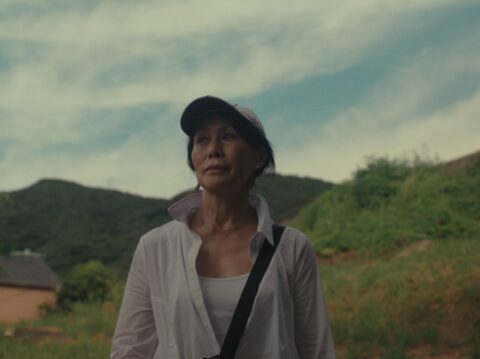“When I was most beautiful/People around me were killed” — “When I Was Most Beautiful” by Norika Ibaragi, 1953
With undulating hills that meet the ocean, Instagram-perfect sunsets and rows upon rows of traditional houses, Nagasaki looks positively paradisiacal. Canadian filmmaker Laurence Lévesque takes his time to capture the waxing and waning of the light and the slow rhythms of everyday life in his debut feature Okurimono (2024), deliberately contrasting the beauty of the island city with its dark and tragic history.
For Nagasaki is not synonymous with beauty, but terror. On August 9th, 1945, three days after the bombing of Hiroshima, the Americans dropped the Fat Man bomb on the city, killing at least 74,000 people. (They still haven’t apologised.)
Noriko Ibaragi’s poem, “When I Was Most Beautiful,” (different translation in link) is quoted extensively in the film, illustrating with devastating simplicity how this barbaric weapon ripped the youth and joy directly from hundreds of thousands of people.
The film follows another Noriko, returning from Montreal, as she comes to terms with the bomb’s impact on her family, most notably her long-dead mother, who only managed to survive due to her fortuitous location within the city hospital, shielded from the blast by fortified concrete walls. In slow and deliberate scenes, often shot with a single static camera while accompanied by a sleepy synth score, we watch her as she sorts through her mother’s things and gets the house ready for sale.
At some point, she comes across a trove of letters, which bring the horror of the atomic bomb back with startling immediacy, setting her on a journey of discovery through her family’s past, allowing Nuriko to see a part of her mother that was thought previously lost.
There are not that many more layers to this documentary than that, to be honest, which is more about honing a particular aesthetic — lots of behind-the-shoulder shots, immaculate landscapes, poetic voiceover — than going deep on the social and political implications of atomic devastation. For example, I would’ve liked to have learned more about the “hibakusha,” the survivors who faced discrimination in everyday society due to misconceptions about radiation sickness, making them reticent to register their own families for fear of losing employment.
Naturally, the testimonies of survivors, caught in a square ratio, are the most powerful parts of the documentary, showing their reticence, even now, to go too deep when looking back at something so deeply unthinkable. We may never get to hear Noriko’s mother’s true thoughts, yet through these other survivors, we get a patchwork composite, undimmed by nearly 80 years of time.
Redmond is the editor-in-chief of Journey Into Cinema.

